/
Content
/
0 min read
What is the Link Spam Update and how do you recover from Google updates?
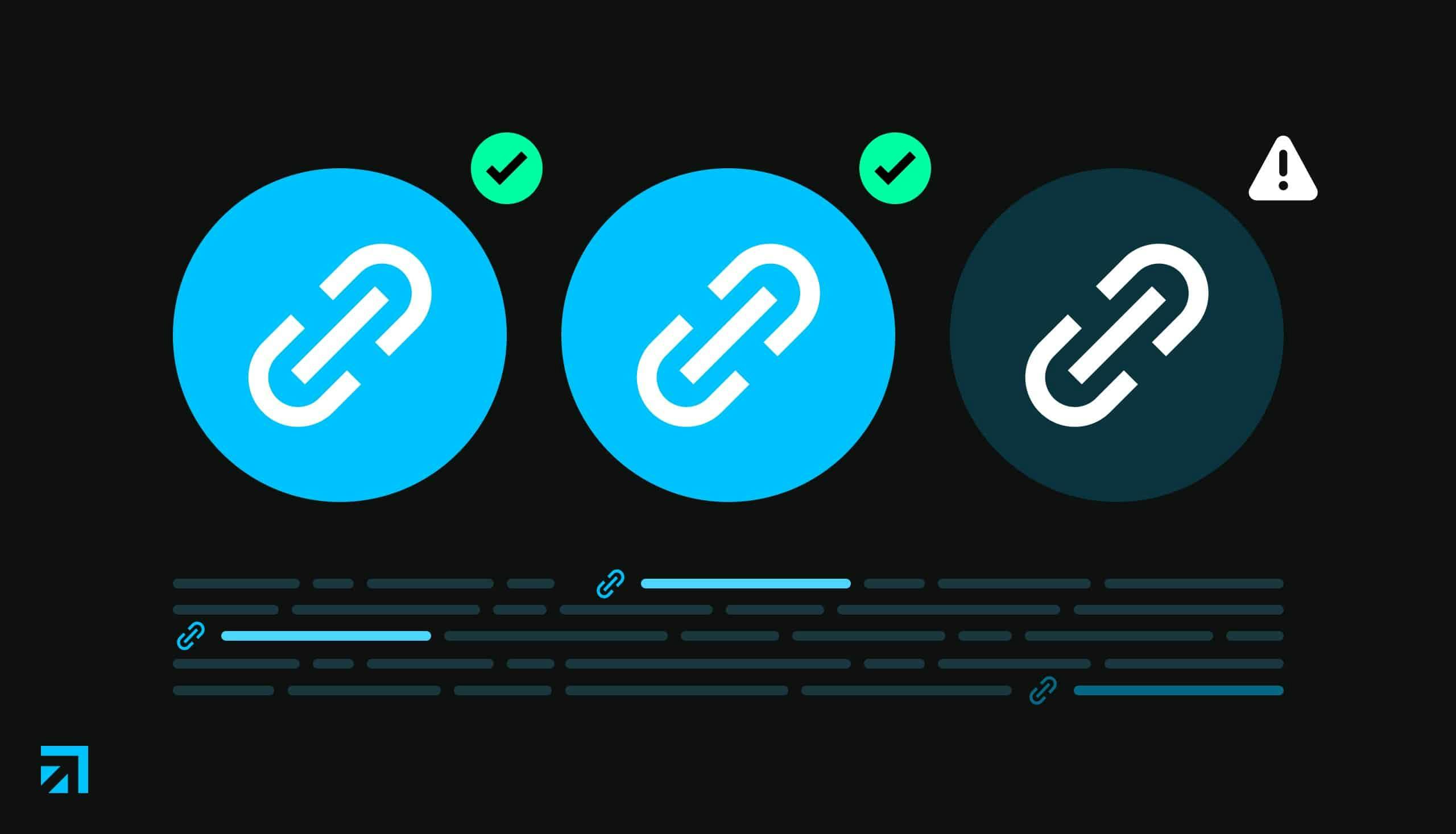
Google is getting much better at spotting these unnatural links
And they are going to nullify them - i.e. ignore them in their ranking algorithms.
If you’ve done paid link placements, reach out to them to add the rel=”sponsored” tag to any link.
If your SEO strategy relies heavily on guest blogging, start diversifying your link portfolio. The best links aren’t bought or placed yourself, they’re earned.
Monitor rankings and traffic to pages you’ve bought links to. If they fall deep into the abyss of the SERPs, start building authoritative and trustworthy links using outreach.
Get guidance and help from a specialized SEO agency
Now export all the affected URL’s into a spreadsheet
Find out what the related keywords for each URL are. Here we use Ahrefs.
For each of these keywords check out the new top 10 ranking results and figure out what they do well that you don’t.
Gather these findings in a separate document.
Uh oh, a new Google update has come along. This is a time of fear and glee for SEOs worldwide as they either scramble to recover from their malpractices or open up champagne to greet their new large influx of organic traffic.
Recently, we’ve had both two core updates in June and July, as well as a link spam update. This is because Google has moved to a new update model. But more on that later.
For now, we’ll walk you through the Link Spam Update. And then we’ll talk about Google updates more broadly. Finally, what can happen if you use shady practices and how you can recover.
The Link Spam Update
On July 26, Google announced their newest efforts in fighting poor-quality content from ranking high: the Link Spam Update. It is supposed to be rolled out over the following two weeks, which means that it should likely be completely integrated as of publishing.
What is it?
So, we all know that links are the bread and butter of SEO. They essentially function as a digital “like” or as the web equivalent of an academic citation. It is one of the many ways that Google figures out what content deserves to be at the top and what doesn’t.
However, links having such a big weight, and top rankings having such a heavy commercial impact, has led to a whole industry centred on providing links to content on the internet.
Some of this is legitimate. But a lot of it isn’t. Google has clarified what they see as natural and unnatural links many times, for example, in their guidelines on link schemes.
This link spam update focuses on paid links, affiliate links and sponsored guest posting.
Sponsored links and affiliate links
A common way to monetize an internet blog is to either do affiliate linking or sponsored guest posting.

Affiliate links are links that promote products or services of other companies. Whenever that link is clicked, and the product is bought, the affiliate will earn a commission.
Sponsored guest posting are sites that receive money in exchange for letting another company publish content on their website.
There is nothing inherently wrong with this. It’s how many website owners get paid. And a lot of companies can get good, qualified traffic and brand awareness from it.
Where it goes wrong is when it’s a part of manipulative link practices. This means that if it’s not tagged properly, Google will look at it as an attempt to manipulate their ranking algorithms - because it will look like you are buying links. And believe it or not, Google doesn’t like that.
Adding to that, it’s likely also a violation of marketing laws depending on your country.
So what changes with the update?
The new update is a way for Google to try to combat this. Here’s what they say:
“This algorithm update [...] is even more effective at identifying and nullifying link spam more broadly, across multiple languages. Sites taking part in link spam will see changes in Search as those links are re-assessed by our algorithms.”
What’s important to note here is the following:
However, it’s not that easy. In the same post, they mention that “When we detect sites engaging in either publishing or acquiring links with excessive sponsored and guest posting without proper link tags, algorithmic and manual actions may be applied.”
So, to avoid this, Google has clarified their guidelines on how to tag links that are paid for so it is more transparent.
I’m now going to walk you through whether you should care or not. First, I’ll do it by looking into how the SERPs have fluctuated and changed since the update. After that, I’ll give out some pointers on what this update means for your business and its SEO strategy.
What has happened to the search landscape?
The issue with SEO testing is that there are a ton of factors to account for. And looking at a single site, even by comparing before and after a certain date, is a very uncertain way to determine if the algorithm impacts the search landscape.
Luckily, some services monitor a large dataset of keywords and SERPs to calculate how much they fluctuate.
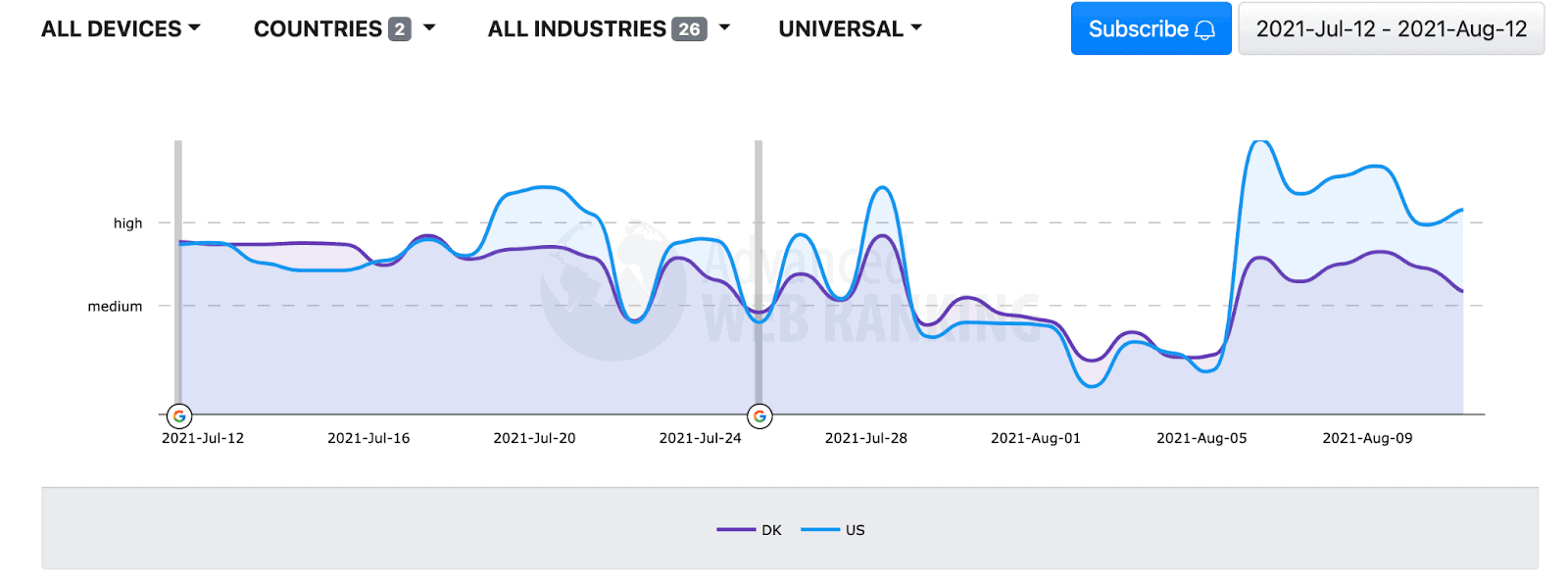
Here we compare our home market and the US: As you can see, there is a massive spike in fluctuations after the update started rolling out, peaking around the 5th of August.
This also confirms something that most SEOs know: paid links have been a mainstay of SEO for a long time - making this update a welcome change. The similarity of the graphs also confirms that the update is multilingual.
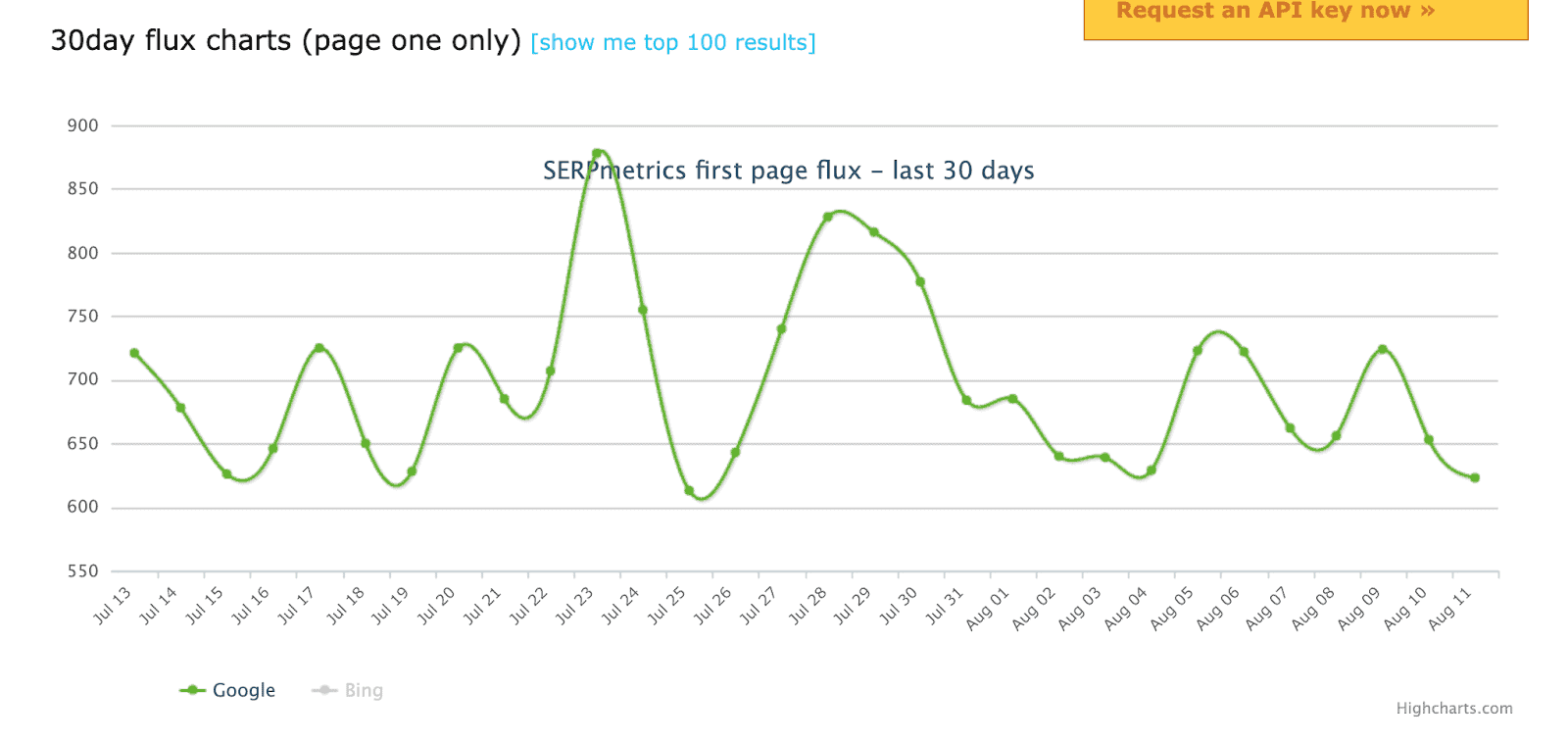
This is a view for page 1 results only where we see a smaller degree of fluctuations. However, keep in mind that with core updates rolling out from July, it has been some busy months for Google. It could also mean that a lot of top 10 SERPs already had more qualified links.
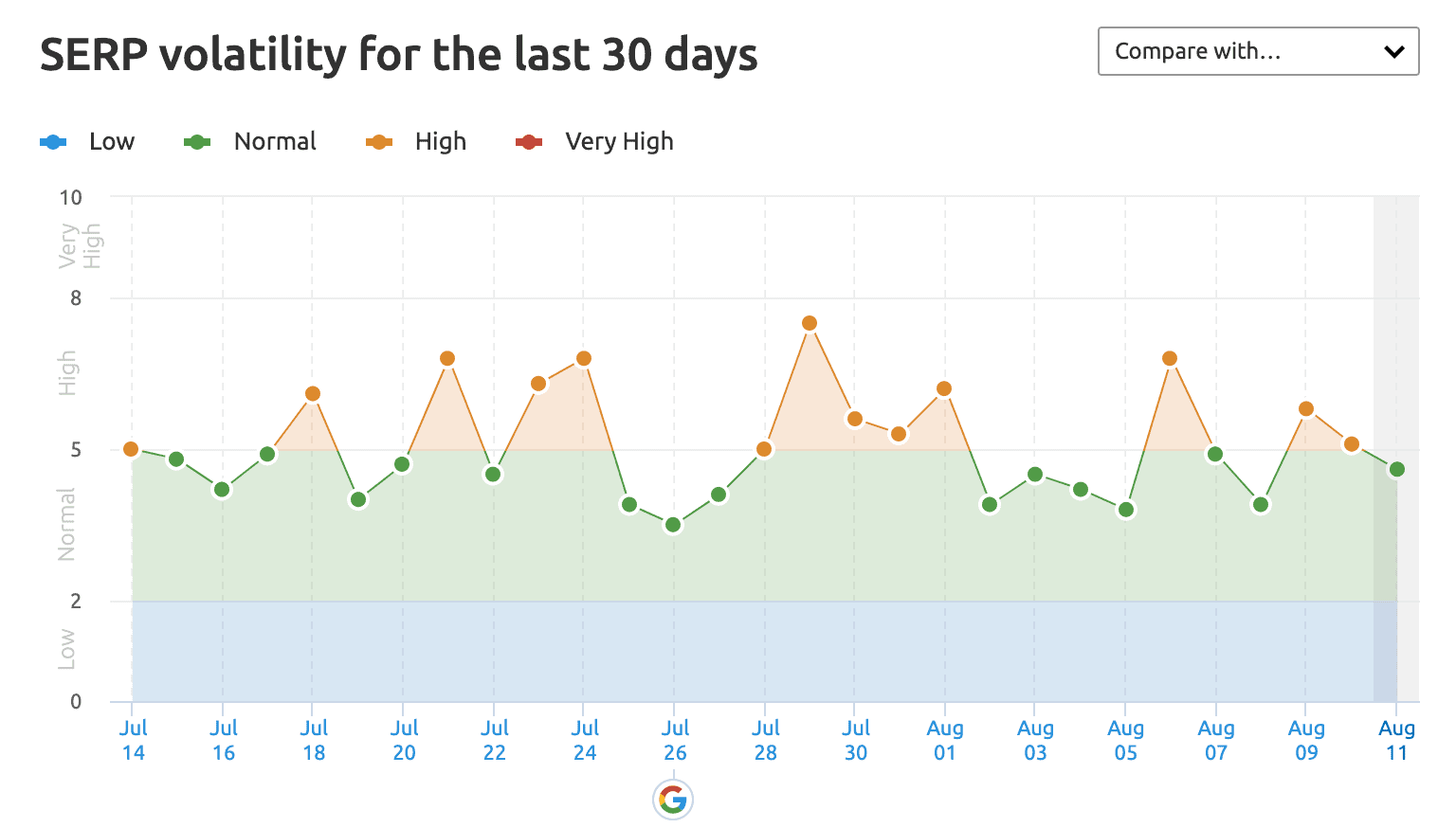
Semrush shows a very similar curve with a peak immediately following the update's announcement in the US.
A sneaky unconfirmed update
The attentive reader will notice that from around August 5th, there has also been some volatility. This can either mean an unconfirmed Google update or just that the update began its last rolling out phase.
Something that was also confirmed on Twitter by Danny Sullivan:
What does this mean for your business?
So after these stats and explanations, I think it’s time to go back to the most important matter at hand: What should you do about this?
It really depends on two things: Does your business rely on monetizing links through affiliate or sponsored guest posting?
Or does your company currently engage in SEO practices around this matter?
For blogs
Google is pretty clear here: It is your responsibility to start properly tagging links if they are placed following an exchange of money.
How do you do that? Well, for a lot of CMS’s they will very clearly let you do it natively. Otherwise, there are plugins. For a more manual view, what we’re talking about here is “rel” tags in the HTML element.
It would look like this:
<a href =“https://www.bonzer.io” rel=“sponsored”>Example link</a>Here’s a quick overview of the different rel tags and when to use them:
You can read more about the tags in Google’s guidelines.
If you’ve already tagged links with “nofollow”, there is no need to go back and change them to “sponsored”. But try doing it in the future!
Of course, this probably puts you on the spot regarding the value of paid link placements. Since these rel-tagged links don’t confer link value to other sites, some of the value is lost. So make sure to understand better the value that you offer to sites in the form of brand awareness and direct traffic to market yourself better.
For businesses that do SEO
By now, you probably understand that paid link placements are bad. Not just because they might cause you to incur future penalties that can be hard to recover from, but also because they’re often a complete waste of your money.
In the best-case scenario, you get a little link value from the link. In the worst, you are set back years in organic presence.
Here are 4 tips on what you should do after the update:
However, keep in mind that Google themself stated that they’re more likely to nullify spammy links than to punish you for them. So likely, you don’t need to do a big clean-up as much as you need to focus your efforts elsewhere in the future.
It can still feel like a punishment, though. If your previous rankings were built on the backs of paid link placements, you might get a sinking feeling in your stomach as your more legitimate competitors soar above you in the SERPs. Money and effort are down the drain.
So how can you make sure this doesn’t happen again?
Your guide to recovering from Google updates
The first time you get shafted by a Google update is always something to remember. Ask any SEO professional, and they probably have a war story. The fact of the matter is that it happens to everyone. Maybe they did their best, and Google changed their priorities. Maybe they involuntarily did something that violates the guidelines.
Or maybe they engaged in black hat strategies in the hope that they’d slip away from Google’s omniscient algorithms.
Either way, with a brand-spanking-new internal update at Google, updates are likely to come even faster, more frequently and be even more comprehensive.
A recipe for disaster if you do black-hat SEO. And a recipe for success if you follow Google’s guidelines. So I’ll start by laying down the law on what can happen.
What’s the worst that can happen?
Back in December 2020, Google rolled out one of their infamous core updates. It centred on content relevance and quality and, in our experience, heavily impacted the medical niche. Here’s an example of a site that lost 50.000 monthly visitors over the course of a couple of days:
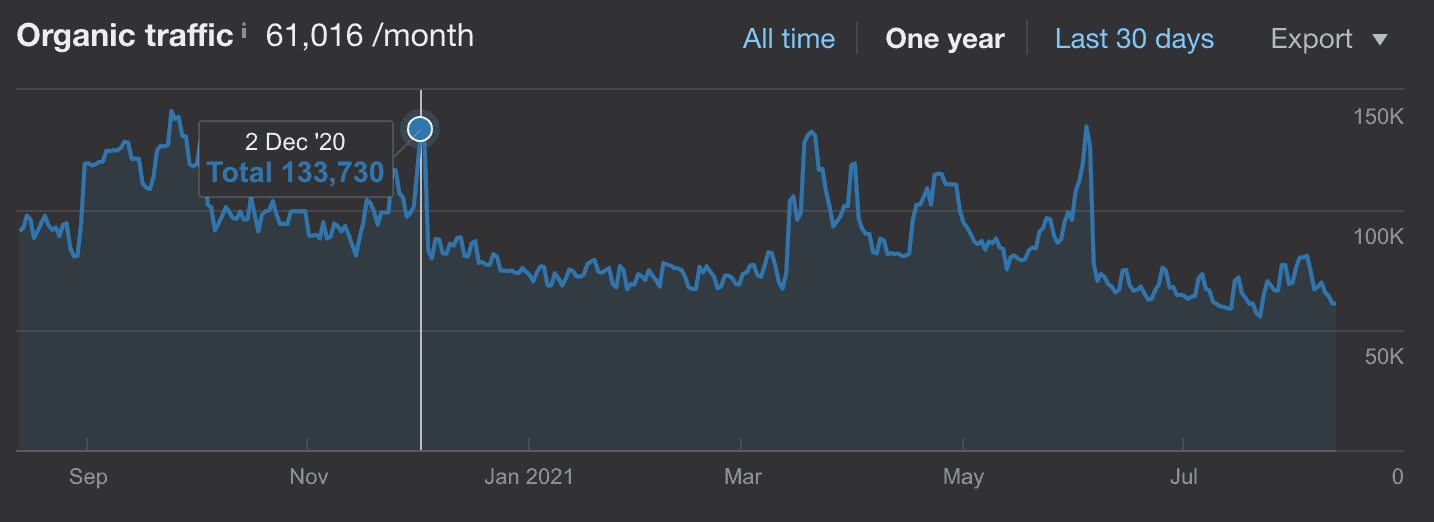
Now, ask yourself: What would it mean for your business to lose 30-40% of its monthly traffic overnight?
Probably not something you’d celebrate. And this is only one example out of millions. If you do not live up to Google’s guidelines, you risk being punished in one of two ways: an algorithmic penalty or a manual penalty. The latter is rarer but also much more serious.
Algorithmic penalties
An algorithmic penalty can look like the above. Without warning or notice, your rankings disappear, and your traffic vanishes into thin air.
It happens because Google changes their ranking algorithms and selects other content to rise to the top. So it might not even be that you are penalized per se, but rather that your competitors are rewarded.
But it sure feels like being sent to bed without dinner.
Manual penalties
A manual penalty is when an actual living, breathing human being has checked out your site and determined it breaches one or more of Google’s guidelines. There are 14 different violations you can be called to the principal’s office for - you’ll find a list in the above link.
These are much rarer than algorithmic penalties. However, once you have had one set against you, the fight to recover can be very exhausting. First, you have to fix the issue and then get Google to check out your site again.
This is time-consuming and can sometimes be frustrating as Google isn't always totally forthcoming and transparent about the endeavour.
And you can bet that your site will be under intensified scrutiny in the future.
How do you recover?
Of course, the easy answer is that you should follow Google’s guidelines, and you’ll have nothing to worry about. But maybe you’ve inherited a site with some previous malfeasance or have done it in the past. So, how do you recover when you notice that ranks and traffic suddenly drops?
The first thing to state is: maybe you’ve done nothing wrong. It might just be that other sites have been promoted instead of you. If that’s the case, you want to go back and focus heavily on creating quality content and good searcher experiences.
And the second thing is this: There’s not going to be any quick fixes. So this could be an uphill battle for months and even years.
The third one is this: Don’t panic immediately. Google changes things around and experiments. Give it a good week or two to keep an eye on developments before you start putting together a plan.
If you’ve got the grit for that, read on:
1 - Stay abreast of Google’s updates
Step 1 is a matter of knowledge. Start by fully reading Google’s fundamental guidelines on links and content. You’ll find them here:
Then consult Google’s own developer blog for news on any updates. I’ve subscribed to it and receive emails whenever new content is published there. Finally, if you’ve received a manual action, you should have a pretty clear idea of what the issue is.
You can also check out other SEO expertise sites like Search Engine Journal. If you’ve been affected, other sites probably have been as well and are bound to write about it.
If you did go into a panic, it could also be the moment to contact some experts. We’re here to help.
2 - Assess how you’ve been impacted
Now you need to take a broad overview of which of your pages and keywords have been affected. A good way to do it is to dive into Search Console and Google Analytics. Set up a time period and a comparison time period.
3 - Work out a way forward
This is where it gets hard to give advice. Because the next step is to enact all the suggested changes from step 2. Of course, this heavily depends on the nature of the update and what the changes have been.
But to give some broad guidelines, you can separate it into three categories: content, links and technical issues.
You need to gather relevant co-workers in your organization. For content, this can be digital marketers, content writers and designers. For links, it’s probably the digital marketers and maybe sales staff. For technical issues, it’s your developers or web agency. From there, you need to put together a battle plan on how to update and fix any issues.
Test and monitor continuously for changes. Keep an eye on rankings and traffic and start URL by URL.
If you want to make sure you do things right moving forward, you should consider whether you have the internal resources to do SEO properly. If not, maybe it’s time to enlist the services of a specialist SEO agency like Bonzer.

CPO & Partner
Thomas is the CPO (Chief Product Officer) and Partner at Bonzer, which means his day-to-day focus lies in constantly analyzing Google's algorithm and developing SEO as a product. Thomas has worked with SEO for several years with a strong passion for sharing his knowledge on how businesses can best implement SEO into their operations. In addition to Bonzer, Thomas contributes his expertise to readers at publications like Search Engine Journal, DanDomain, and Detailfolk. He also teaches Digital Media Strategy at Copenhagen Business School and SEO at DMJX in Copenhagen. If you have any questions or requests regarding the SEO universe, feel free to contact him at [email protected].

Let us show you an SEO strategy that can take you to the next level
A brief meeting, where we review your position in the market and present the opportunities.
Let us show you an SEO strategy that can take you to the next level
A brief meeting, where we review your position in the market and present the opportunities.